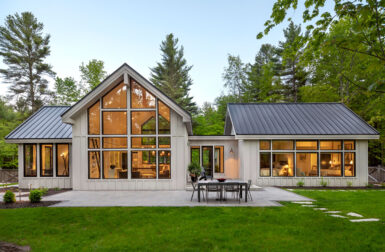Ready. Set. Go!
To begin working with 3D in Photoshop you’ll simply convert a current Layer, Selection, Path and Layer or Text to a 3D object by selecting 3D > Create 3D Extrusion from (Layer, Path, or Selection) and you’re ready to begin. You can also open a 3D file into an existing Photoshop document by selecting 3D > New 3D Layer from File.
Tip: A good place to start is using the Text tool to make 3D text, or the Custom Shape tool and selecting one of the many available shape presets. It’s as easy as selecting a shape, drawing it on canvas and converting it into a 3D extrusion.
Create Editable 3D Extrusions
Photoshop CC uses the Illustrator path/shape engine to make it easier to create extruded Shape and Closed Paths into 3D objects. Once extruded, you can select the object in the 3D Panel and then select Mesh attributes in the Properties panel and click the Edit Source button to open and adjust the extrusion shape using the Path Editing tools.
Tip: You can use all of the shape tools with the source shape object, allowing you to use Remove From Front to “cut” shapes out of your original shape.
Lathe 3D Extrusions Using The Deformation Properties
With a 3D Extrusion object you can use the Deform Properties to create a lathed object by bending the object all the way around in a circle upon itself. This works best for symmetrical objects like a wine glass, bottle or vase.
Tip: Use guides and create the left or right half of the object you want to make. Make a new layer and name it. Select the work path of the object, and right click and select New 3D Extrusion from Selected Path. Select the new object in the 3D Scene. Select Deform in the Properties panel and set the Deformation Axis to the Center Right, set Extrusion to 0, Select Bend and set Horizontal Angle X to 360°.
Convert Grayscale Images into 3D Objects
When starting from a grayscale image, Photoshop can create a 3D mesh object by converting the gray values to different shades offset from the center (black being at the center and white being the furthest away). You can then use the Scale tool to adjust the intensity (or Edit Source of the 3D Mesh object).
Tip: When using Mesh from Grayscale you’ll get the best quality mesh from a 32 bit grayscale image.
There are four presets for generating a mesh; Plane (like a wrinkled sheet of paper, Two-Sided Plane (the same as Plane but two that are mirrored along their Y (up) axis, also known as its local XZ (horizon) plane), Sphere and Cylinder.
Tip: When using Sphere, use a 2:1 ratio (W:H) like 500 x 250 then use (Filter > Distort > Spherize; Mode Horizontal Only, Amount: 100) to adjust for “polar pinching.”
Enhance Surface Details
Use Opacity Maps to cut holes into the objects, and use Bump and Normal maps to create surface detail, such as a textured handle for gripping.
Tip: Creating a black and white diamond checkered bump map will produce a nice textured grip for handles.
Auto-Update Objects and Textures When Saving Source Files
When you edit the source file of 3D Extrusions, Mesh object, 3D Text, or textures, saving the file you’re working on updates the object or texture in Photoshop so you can see your changes and fine-tune your design as you need to.
Tip: Saving a file updates all parent documents. Save often—you can always step back in history to undo unwanted changes.
Automatic 3D Print Ready Object
When you’ve finished designing your 3D object, use the 3D Print Settings to select a material or printer and Photoshop will show you the Print Volume available.
Tip: You can set the resolution of the object by adjusting the Print Quality setting.
Note: This process has the Enhance Surface Details options, which will let you select the texture type and apply its affect to the final mesh geometry.
Built-In 3rd Party 3D Printing Services and Materials Profiles
Photoshop makes it easy to go from digital design to physical objects in a variety of material with built-in material profiles for Shapeways and Sculpteo. Select the material you want, and a price estimate is provided for you.
Tip: Scale down the object to save on printing costs.
Bonus!!! Create Custom 3D Printer Profiles For Your Own 3D Printer
Are you one of those crazy makers or tinkerers, or do you have a 3D printer? If you’re one of the daring, you can download Learn How To Create 3D Printer Profiles at Photoshop.com and create your own custom printer driver with parameters to fine-tune your final output.
Note: This is a highly advanced and technical process and should only be used by people who understand how their 3D printer works, and how to edit a simple XML file… Use at your own risk. (^_^)







